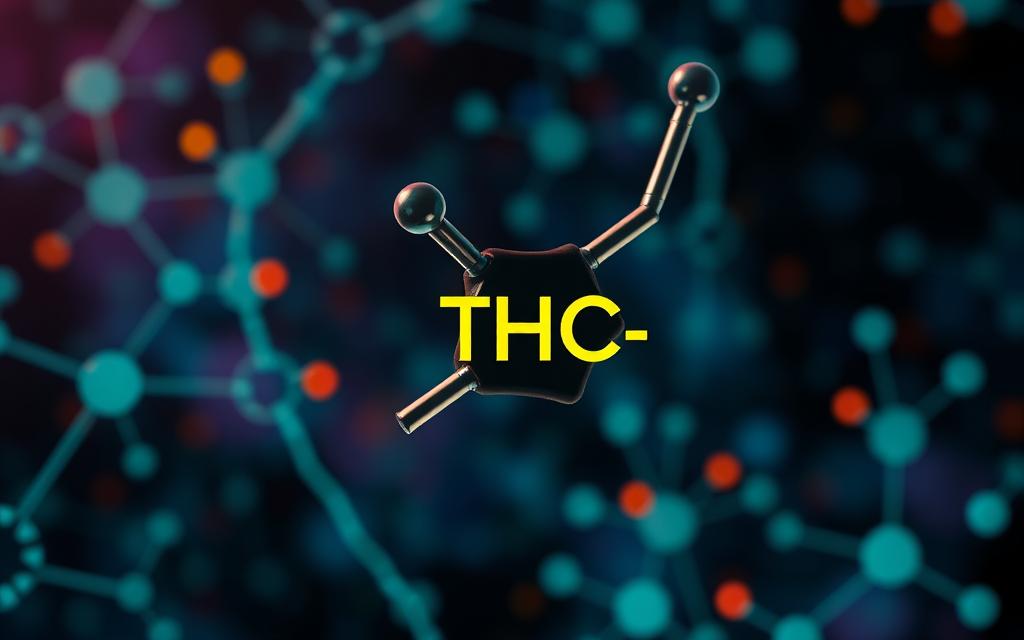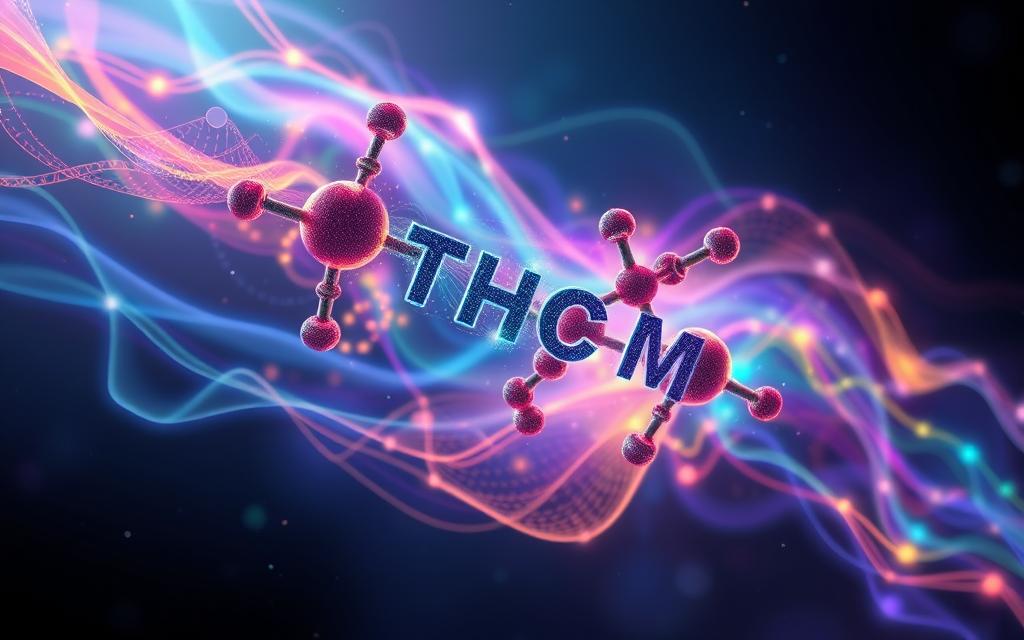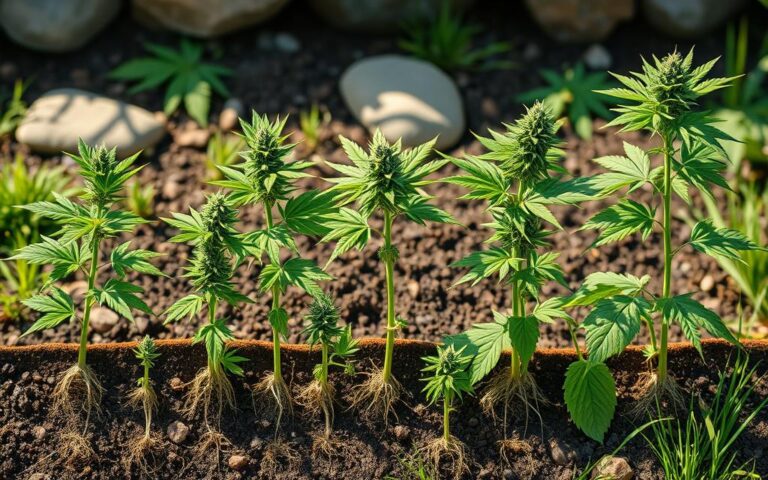Does THC-M Cause a High?
The recently discovered THC-M, or Tetrahydrocannabinol Monomethylether, is getting a lot of attention. It was first found in the smoke of cannabis flowers in 1977. People are very curious about it. They especially wonder if it gives a high like THC does.
THC-M is known for coming from THC when it breaks down. But, not much research has been done on it yet. Most people agree that THC-M doesn’t make you feel high like THC. This lack of intoxicating effects keeps everyone guessing about its real impact.
Understanding THC-M: A New Cannabinoid
THC-M is a rare cannabinoid that has sparked interest in the realm of new cannabinoids. Its special characteristics and beginnings are quite captivating for researchers. It was first spotted in cannabis smoke in 1977, emerging as a byproduct from tetrahydrocannabinol (THC). The exact origins of THC-M are still a bit unclear. This is due to the scarce presence in cannabis plants, which hinders detailed studies.
Origins of THC-M in Cannabis
The study of THC-M in cannabis has been limited even though it was discovered decades ago. It’s hard to find and extract because it doesn’t show up much. Compared to the regular THC, THC-M is found in much smaller amounts in cannabis. This not only makes research harder but also affects how much of it is available for sale, which isn’t a lot and can be quite expensive.
Comparison with Other Cannabinoids
THC-M differs quite a bit from other cannabinoids like CBD, Delta-8, and Delta-10. It doesn’t make people feel high like THC does, but early research hints it might be stronger. Here’s a quick comparison:
| Cannabinoid | Psychoactivity | Common Effects | Availability |
|---|---|---|---|
| THC | High | Euphoria, relaxation | Widely available |
| CBD | Non-psychoactive | Relaxation, anti-inflammatory | Widely available |
| Delta-8 | Moderate | Relaxation, euphoria | Moderately available |
| Delta-10 | Low | Energising, uplifting | Limited availability |
| THC-M | None identified | Unknown | Very limited |
Continued research will shed more light on how THC-M compares to other cannabinoids. This journey into understanding THC-M better is quite promising. It opens up new possibilities for discovering its unique benefits in the future.
What Is THC-M and How Does It Differ from THC?
Exploring THC-M offers a fascinating insight into its unique aspects, different from THC. We learn about THC-M’s structure and how it might interact within the body. This helps us see the possible benefits of using THC-M.
Chemical Structure of THC-M
THC-M is known as a rare cannabinoid and is an isomer of THC-H. They have the same chemical makeup, C22H32O2, and molecular weight. But, THC-M has special features that may affect its effects. These differences are key in how THC-M works with cannabinoid receptors.
The Role of Cyclopropyl Ring in THC-M
THC-M has a cyclopropyl ring in its structure, unlike traditional THC. This ring makes THC-M unique and might lead to different effects. Knowing about this ring helps us understand the potential of THC-M better.

With these findings, cannabis users have new ways to enjoy their time. Activities like painting, cooking, or listening to music can enhance the experience. For tips on what to do while high, check out this guide.
Does THC-M Get You High?
The subject of THC-M and its effects is quite interesting. THC-M on its own might not make you feel high. But it’s thought to boost the effects of other cannabinoids.
Evidence Surrounding Psychoactivity
Studies show THC-M is not more intoxicating than other cannabinoids. But it’s found in marijuana smoke. Products with THC-M, like vapes, might use it with other cannabinoids. This could make the user’s experience stronger.
Potential Role as a Cannabinoid Potentiator
As a cannabinoid potentiator, THC-M could make other cannabinoids’ effects stronger. So, THC-M might not get you high by itself. But it could intensify the high from other cannabinoids in the mix.
THC-M’s effects are still being studied. As cannabis products keep evolving, knowing about these effects is key for users. This helps them make informed choices in the cannabis world.
Effects and Benefits of THCM
THCM is getting noticed for its special qualities. These might be better than what traditional cannabinoids offer. Early studies show THCM has powerful anti-inflammatory effects. This could lead to new ways to treat diseases. Exploring this compound more could reveal how it helps with various health issues.
Anti-Inflammatory Properties
Scientists are beginning to study THCM’s ability to fight inflammation. Many studies suggest cannabinoids can reduce inflammation. THCM appears to be similar, possibly helping treat conditions caused by inflammation.
Potential Therapeutic Uses
THCM could also help with pain and nausea. People who’ve tried THCM say it’s helped with their chronic pain and stomach problems. With growing interest in THCM, more research will tell us how it can be used in medicine.
| Potential Benefits | Details |
|---|---|
| Anti-Inflammatory Effects | May assist in reducing inflammation and related pain. |
| Pain Management | Could provide relief for chronic pain conditions. |
| Nausea Relief | Possibly effective in alleviating nausea symptoms. |
The medical world is still learning about THCM. But its potential for future treatments looks promising.
Safety and Legality of THC-M Products
The rules around cannabinoid legality are complex, thanks to THC-M’s entry. Every area has its own laws, affecting the safety and availability of these products. It’s key for users to know these rules to navigate the market well.
Current Regulations and Market Availability
Nineteen states and the District of Columbia have made cannabis for adults legal, winning more public backing. However, finding THC-M products is still hard and often tricky. Today, no well-known suppliers offer THC-M because labs can’t isolate it well.
More high-potency products are entering the legal cannabis scene. But, this trend brings safety worries about THC-M. With no single federal rule for cannabinoids, the market faces confusion. Plus, after cannabis became legal, more people drove impaired, and emergency visits spiked, leading to calls for stricter control.
Considerations for Consumers
Dealing with THC-M safely means being careful. Many online items might not be real cannabinoids; they could be fake. So, it’s crucial for buyers to stick with trusted brands that show their test results openly.
- Check lab reports for real safety info.
- Pick products from brands known for their quality.
- Keep up with laws that might change cannabinoid rules.
- Talk to a doctor before trying cannabinoid products if you’re unsure about their safety.
In a changing scene, keeping safe as a consumer is top priority. Being smart and careful will help make sure you choose safer cannabinoid products as the THC-M market grows.
| Regulatory Aspect | Details |
|---|---|
| Legalisation Status | 19 states plus DC legalised adult use cannabis |
| Medicinal Use | 18 states allow THC-containing products; 10 restrict to low THC |
| Public Support | Nearly 70% support legalisation of adult-use cannabis |
| Product Safety | Limited suppliers; products may be synthetic or counterfeit |
| Consumer Precautions | Verify lab reports; choose reputable brands |
Conclusion
Delving into THC-M reveals an exciting area in cannabinoid research. Early studies suggest it could offer therapeutic benefits. However, its complex structure and possible effects call for more research.
This research aims to deepen our understanding of THC-M. It focuses on its potential for managing pain and fighting inflammation.
The strength of THC-M, compared to THC, shows the need for informed choices by consumers. Knowing about THC-M summary is crucial due to varying laws and safety issues. Being informed helps consumers enjoy this cannabinoid safely.
In summary, THC-M’s potential is intriguing, but we need more research to fully understand it. The scientific world is eager to learn how it might be used for health. These final thoughts call for an open approach to cannabis science and its bright future.










